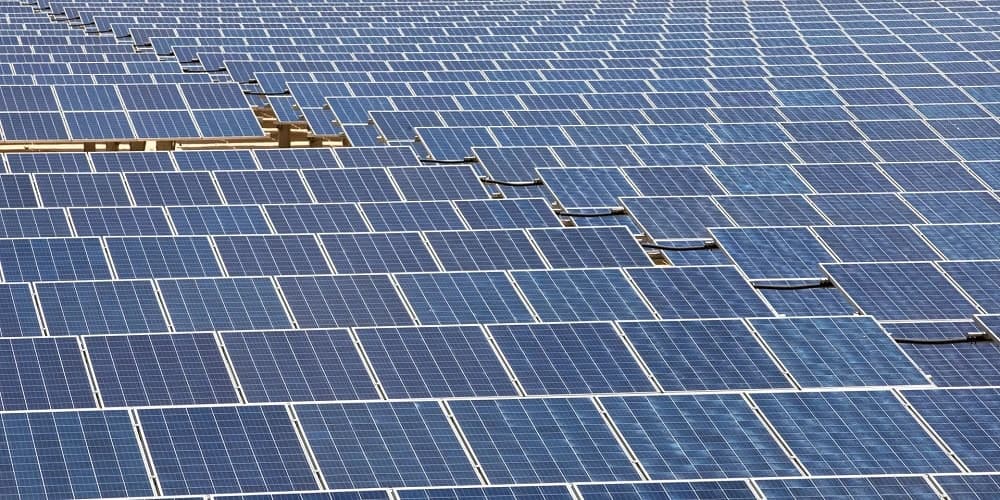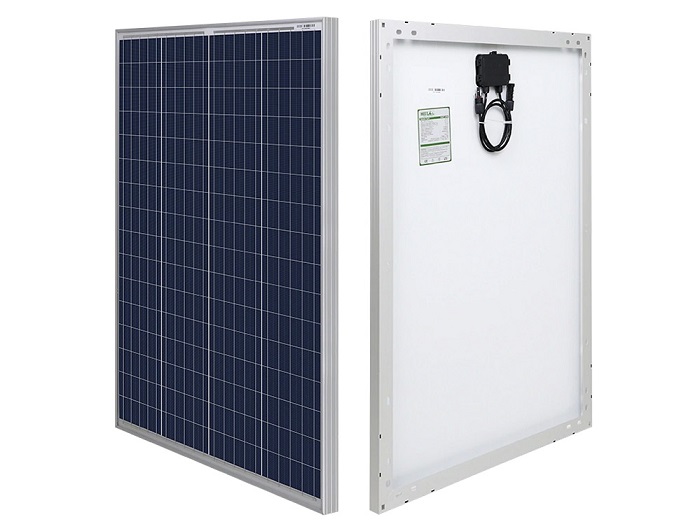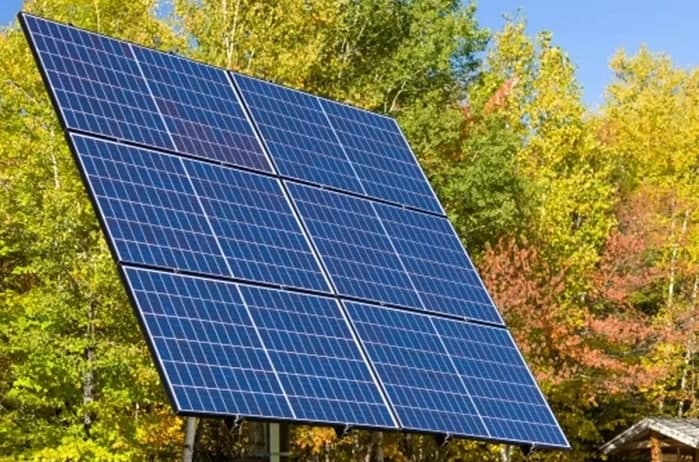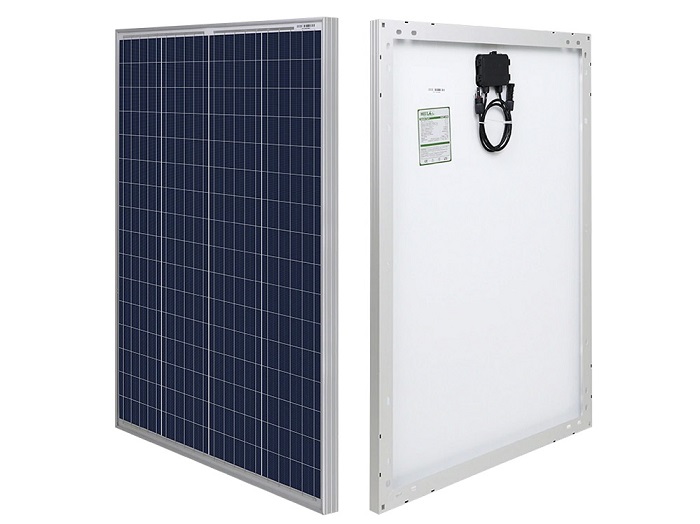Since 2008, hundreds of thousands of solar panels have popped up across the country as an increasing number of Americans choose to power their daily lives with the sun’s energy. You also may be considering the option of adding a solar energy system to your house’s roof. When you evaluate solar panels for your photovoltaic system, you will encounter three main categories of panel options: monocrystalline solar panels, polycrystalline solar panels, and thin-film solar panels. All these types of panels produce energy from the sun, but they each have different features. In this article, we will take a closer look at the polycrystalline solar panel. Follow this new blog in Linquip to learn more about this type of solar panel.
What is a polycrystalline solar panel?
Polycrystalline or multi crystalline solar panels are solar panels that consist of several crystals of silicon in a single PV cell. Several fragments of silicon are melted together to form the wafers of polycrystalline solar panels. In the case of polycrystalline solar cells, the vat of molten silicon used to produce the cells is allowed to cool on the panel itself. These solar panels have a surface that looks like a mosaic. They have a square shape and a shining blue hue as they are made up of several polycrystalline silicon. As there are multiple silicon crystals in each cell, polycrystalline panels allow little movement of electrons inside the cells. These solar panels absorb energy from the sun and convert it into electricity.
Polycrystalline solar panel working principle
These solar panels are made of multiple photovoltaic cells. Each cell contains silicon crystals which makes it function as a semiconductor device. When the photons from the sunlight fall on the PN junction (junction between N-type and P-type materials), it imparts energy to the electrons so that they can flow as electric current. Here, P-type materials are deficient in electrons while N-type materials have an abundance of electrons. Two electrodes are connected to the PV cells. The electrode that is on the top surface contains small wires while the electrode on the bottom is a foil-like conductor.
Polycrystalline Solar Panel Features
- Polycrystalline solar panels are more eco-friendly than monocrystalline solar panels as they do not require individual shaping and placement of each crystal and most of the silicon is utilized during production. So, very less waste is produced.
- The acceptable maximum temperature of polycrystalline solar panels is 85 °C while the acceptable minimum temperature is -40 °C.
- Polycrystalline solar panels have lower heat tolerance than monocrystalline panels. So, at higher temperatures, these solar panels have lower efficiency than others.
- Polycrystalline solar panels have a higher temperature coefficient than monocrystalline panels.
- These panels have a high power density.
- They come with a structural frame of their own which makes mounting cheaper and simpler.
Polycrystalline Solar Panel Applications
- Polycrystalline panels are suitable for roof-mounted arrays.
- They are used in large solar farms to harness the power of the sun and supply electricity to nearby areas.
- They are used in standalone or self-powered devices such as traffic lights in remote areas, off-grid households, etc.
Polycrystalline Solar Panel Advantages and Disadvantages
Several advantages and disadvantages come with polycrystalline solar panels which are listed below.
The advantages of polycrystalline panels are as follows.
- Polycrystalline solar panel price is more affordable than monocrystalline panels due to being easier to make and using multiple silicon cells.
- The amount of waste is less on the polycrystalline panel because of the way the silicon wafers are applied to the panel.
- They can be used with batteries and inverter technology.
- The manufacturing process requires very few fossil fuels.
Here are some of the disadvantages of polycrystalline solar panels:
- The efficiency of polycrystalline-based solar panels is less than monocrystalline solar panels because of the lower silicon purity.
- Although the difference is getting smaller all the time, you generally need to cover a slightly larger area to output the same electrical power with polycrystalline solar panels as you would with the best monocrystalline solar panels.
- They may not last as long.
- They damage easily when exposed to high temperatures.
Monocrystalline solar panels vs. polycrystalline solar panels
The difference between monocrystalline and polycrystalline solar cells in Hindi is as follows.
- As the monocrystalline solar panel is constituted of a single crystal, it provides the electrons more space to move for a better electricity flow. This is the reason behind the higher efficiency of monocrystalline panels compared to polycrystalline panels.
- The efficiency of polycrystalline solar panels is somewhat lower, but the benefit for customers is that this option is more affordable.
- When you seek polycrystalline solar panels for sale, the sellers may highlight the blue hue of these panels compared to the monocrystalline panels’ black hue.
- As polycrystalline solar panel manufacturers melt multiple silicon fragments together to produce the wafers for these panels, the electrons in each cell will have less space to move. This makes the efficiency ratings of polycrystalline solar panels lower.
- Monocrystalline solar panel prices will be relatively more compared to polycrystalline solar panels.
- According to some industry experts, monocrystalline solar panel systems have been known to break down if they are even marginally covered in snow or dust or if a part of the panel becomes shaded. Polycrystalline solar panels, on the other hand, are somewhat more resilient in these conditions.
So, this is all you need to know about polycrystalline solar panels. If you enjoy this article, let us know what you think by leaving a comment in the comment section. We will be glad to have your viewpoint on the article. Is there any question we can help you with? Feel free to sign up on Linquip to get the most professional advice from our experts.
Buy Equipment or Ask for a Service
By using Linquip RFQ Service, you can expect to receive quotations from various suppliers across multiple industries and regions.
Click Here to Request a Quotation From Suppliers and Service Providers
Read More On Linquip
- Monocrystalline vs Polycrystalline: Everything You Should Know
- Your Handy Guide to Solar Panel Installation Cost in 2021
- Non-techie Guide To The Difference Between Solar Cell and Solar Panel
- The Ultimate Guide to Solar Panel Calculation: Harness the Power of the Sun with Linquip
- Calculating Solar Panel Wattage: A Comprehensive Guide by Linquip
- How Much Do Solar Panels Cost Per Square Foot?







Thank you for the information
Thanks for visiting our website and leaving your comment! We hope to hear from you again in our other posts.
Absolutely, comprehensive and broader information on product… what’s the life of these polycrystalline panels?
Thanks for visiting our website. You can visit our Industrial Equipment page, where you can find various Solar Panels based on your application and demand. You can also visit our expert page and take advice from hundreds of professionals on your issue.
Super useful as well as well described Many thanks.
Thanks for visiting our website and leaving your comment, Emery! You are encouraged to visit Linquip Tech News, where you can find similar posts.
it’s well explain and direct to the point it have helped me a lot in my school work.thanks a lot
Thanks for visiting our website and leaving your comment! We hope to hear from you again in our other posts.